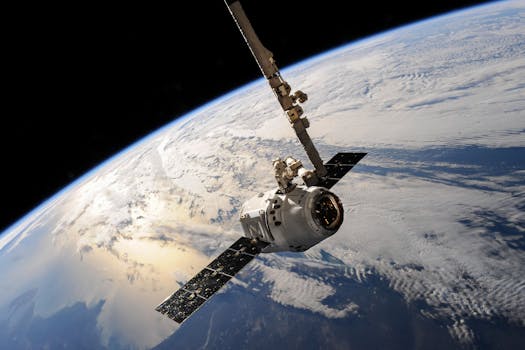GEO satellites, or Geostationary satellites, are a type of satellite that orbits the Earth at an altitude of approximately 36,000 kilometers, remaining stationary above a fixed point on the equator. The Focus Keyword, GEO satellites, have been a cornerstone of modern satellite communications, providing a reliable and efficient means of transmitting data, voice, and video signals across the globe. With their unique ability to maintain a constant position in the sky, GEO satellites have become an essential component of global connectivity, enabling communication services, and supporting various applications such as navigation, weather forecasting, and remote sensing.
The concept of GEO satellites dates back to the 1940s, when scientist Arthur C. Clarke proposed the idea of using satellites in geostationary orbit to transmit signals around the world. The first GEO satellite, Syncom 2, was launched in 1963, and since then, numerous satellites have been launched into geostationary orbit, providing a wide range of services including television broadcasting, telecommunications, and weather forecasting. Today, there are over 500 GEO satellites in orbit, operated by various countries and organizations, and providing critical services to billions of people around the world.
One of the primary advantages of GEO satellites is their ability to provide global coverage, enabling communication services to reach even the most remote and inaccessible areas of the world. GEO satellites are also capable of transmitting high-bandwidth signals, making them ideal for applications such as video conferencing, online gaming, and streaming services. Furthermore, GEO satellites can be used to support various scientific applications, such as Earth observation, climate monitoring, and space weather forecasting.
In addition to their technical capabilities, GEO satellites also play a critical role in supporting global economic development. By providing access to communication services, GEO satellites can help bridge the digital divide, enabling communities to connect with the global economy, and access essential services such as healthcare, education, and financial services. GEO satellites can also support disaster response and recovery efforts, providing critical communication services in the aftermath of a disaster, and enabling emergency responders to coordinate their efforts.
Despite the many benefits of GEO satellites, there are also challenges associated with their use. One of the primary concerns is the risk of congestion in geostationary orbit, as the number of satellites in orbit continues to grow. This can lead to increased interference between satellites, and reduce the overall quality of service. Additionally, the launch and operation of GEO satellites require significant investment, and can be subject to regulatory and political uncertainties. Furthermore, the use of GEO satellites raises important questions about data privacy, security, and the potential for cyber threats.
As the demand for global connectivity continues to grow, the importance of GEO satellites will only continue to increase. To address the challenges associated with their use, it is essential to develop new technologies and strategies for managing the geostationary orbit, and ensuring the long-term sustainability of GEO satellite operations. This can include the development of new satellite designs, propulsion systems, and communication protocols, as well as the implementation of regulatory frameworks and international agreements to govern the use of geostationary orbit.
In conclusion, GEO satellites have revolutionized the way we communicate, and have played a critical role in shaping the modern world. As we look to the future, it is essential to continue investing in the development of new satellite technologies, and to address the challenges associated with their use. By doing so, we can ensure that GEO satellites continue to provide critical services, and support global economic development, for generations to come.
